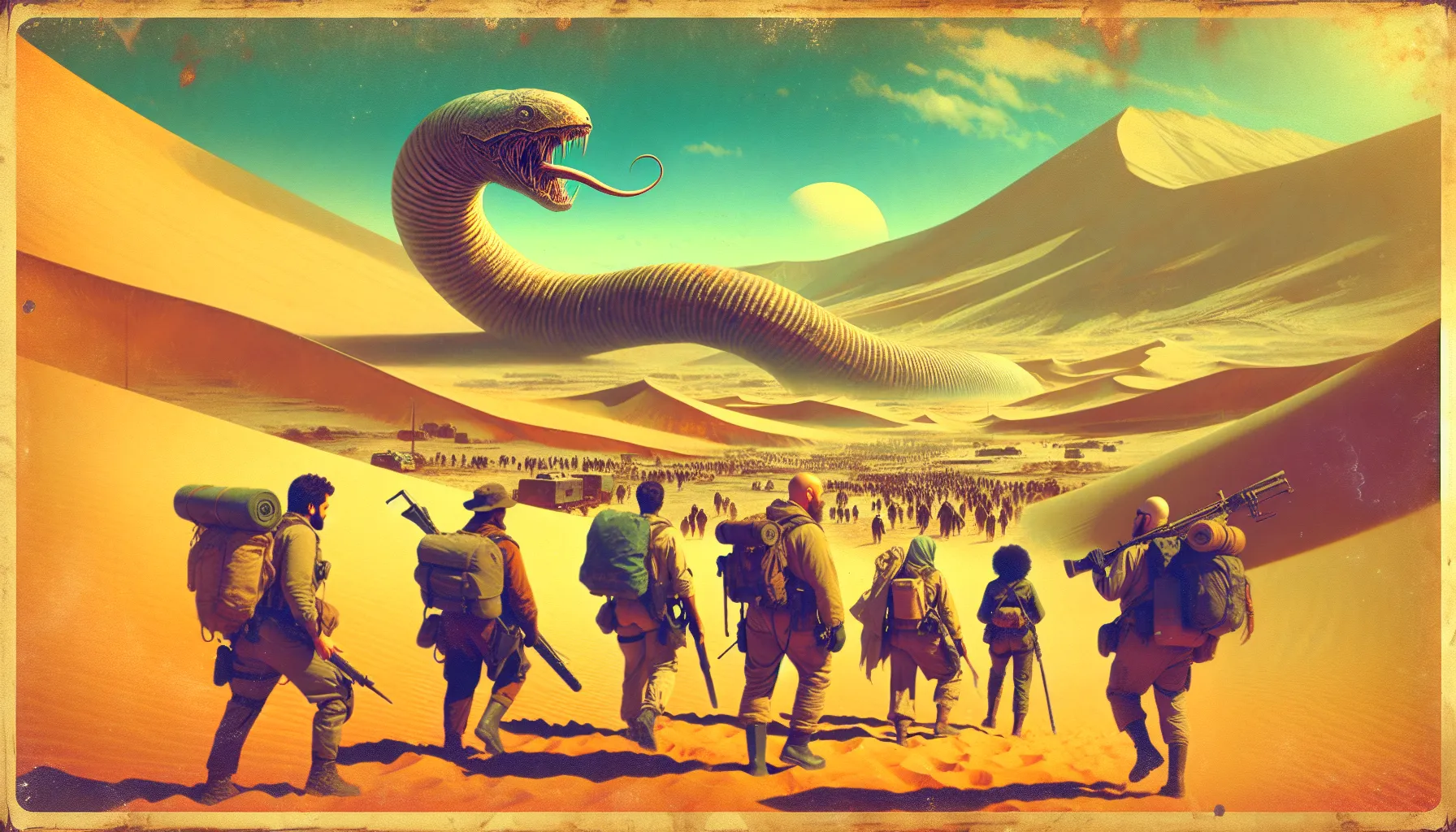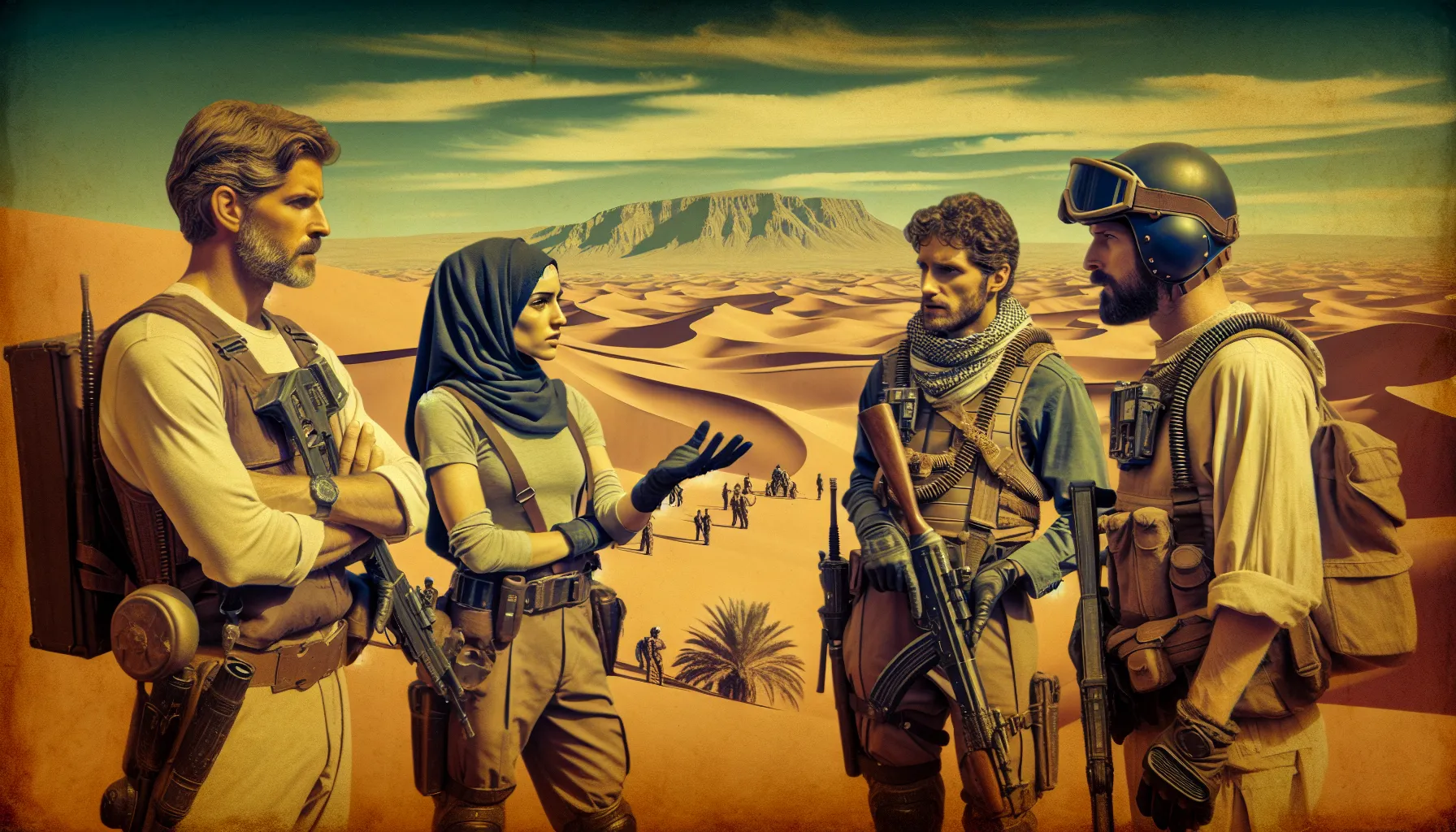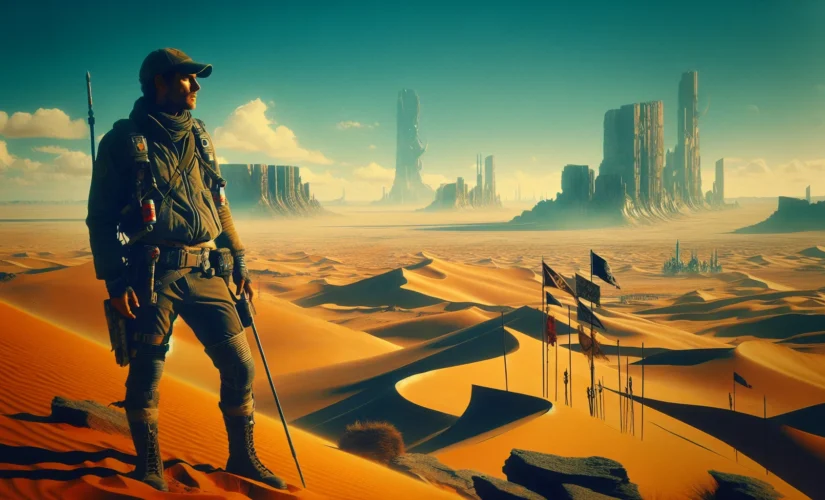When it comes to the Dune universe, its intricate lore and sprawling narratives leave fans with endless questions. One of the hottest debates centers around Dune: Awakening—is it part of the main storyline, or does it exist in an alternate timeline? With its unique take on the Dune saga, this game has sparked curiosity and speculation among fans and newcomers alike.
You might wonder how Dune: Awakening fits into Frank Herbert’s iconic world. Does it expand on the original timeline, or does it carve out its own path? Understanding its place in the Dune canon could change how you experience the game and its connection to the larger mythos. Let’s dive into what makes this question so intriguing.
Overview Of Dune Awakening
Dune: Awakening combines survival mechanics with a massive multiplayer online (MMO) experience, set in the universe of Arrakis. It offers an open-world environment where you explore the desert planet, build shelters, and harvest spice, a resource central to the Dune saga.
The game integrates elements from Frank Herbert’s Dune novels, enhancing its connection to the source material. Core themes include survival amidst harsh conditions, resource competition, and power struggles, aligning closely with the original narrative’s focus.
While the storyline remains distinct, it draws from key events and characters, raising questions about its placement within the broader Dune timeline. Obvious influences from the films and books strengthen its authenticity without confirming it as a canonical continuation or alternate timeline.
Player customization and faction alliances play important roles, allowing you to carve out a unique path within the game’s ecosystem. This immersion into the Dune universe broadens the narrative without directly conflicting with prior iterations.
Exploring The Concept Of Alternate Timelines

Alternate timelines introduce variations to established narratives, presenting events that diverge from the original storyline. In the context of Dune: Awakening, understanding this concept helps clarify its potential place in the Dune universe.
What Are Alternate Timelines?
Alternate timelines represent divergent paths branching from a primary sequence of events. These branches emerge when a story explores “what if” scenarios, allowing characters or events to evolve differently. For example, they often disrupt linear narratives, offering alternative perspectives or reimagined outcomes. In Dune: Awakening, such a timeline could reinterpret key elements of Arrakis, focusing on survival and player-driven narratives without directly aligning with Frank Herbert’s central plot.
How Alternate Timelines Are Used In Fiction
Fiction uses alternate timelines to expand existing lore or reimagine established stories. They help writers introduce fresh possibilities while retaining familiar settings and themes. For instance, these timelines often allow creators to explore hypothetical choices by characters or shifts in critical events. In games like Dune: Awakening, this framework can offer players freedom to shape the desert world’s fate, weaving new plots inspired by the Dune saga without challenging its canonical events.
Analyzing Dune Awakening’s Storyline

Dune: Awakening’s storyline intertwines original elements with deliberate reinterpretations, creating a narrative ecosystem both familiar and distinct. By drawing inspiration from the books while exploring new territory, the game enriches the Dune universe without undermining its foundation.
Key Elements Of The Plot
Core plot elements in Dune: Awakening revolve around survival, faction dynamics, and spice extraction. The desert planet Arrakis serves as the central stage, where players build their story amidst hostile environments and rival groups. Key objectives include harvesting spice, building shelters, and navigating shifting alliances with factions like the Atreides, Harkonnen, and smugglers.
The narrative expands through player-driven decisions. While overarching themes such as resource control and political intrigue mirror the original Dune saga, Awakening emphasizes freedom, allowing players to explore uncharted scenarios. This personalized progression ensures that every player contributes uniquely to the evolving world of Arrakis.
Deviations From The Original Dune Universe
Dune: Awakening departs from strict adherence to the established Dune lore by introducing events and interactions not described in the books. The game’s open-world MMO design prioritizes exploration and interaction over a linear plot, enabling dynamic experiences that diverge from traditional storytelling.
Characters and events may operate outside canonical constraints, implying that the game functions as an alternate timeline or parallel narrative. This approach introduces speculative scenarios where familiar aspects of Arrakis, such as sandworms and the spice economy, coexist with new storylines absent in Frank Herbert’s framework. These deviations maintain thematic consistency while expanding creative possibilities.
Clues And Evidence Supporting Alternate Timeline Theory

Dune: Awakening presents several elements suggesting it operates as an alternate timeline within the Dune universe. These clues arise from narrative adjustments and thematic choices that differ from the original lore.
Narrative Differences And Changes
The game introduces events, characters, and interactions absent from Frank Herbert’s novels. While factions like Atreides and Harkonnen remain central, interactions between them diverge significantly from book events. For instance, the game’s emphasis on player-driven alliances reshapes traditional political dynamics, creating scenarios not rooted in canonical texts.
Additionally, the narrative progression lacks alignment with the linearity of the original timeline. The appearance of new characters and the hypothetical manipulation of established events points toward a reimagined continuity. This approach balances creative freedom with core elements of the source material, enhancing replayability in a way consistent with alternate timelines.
Themes And Motifs Indicative Of A Divergent Timeline
Key survival-based themes, resource competition, and power struggles remain central in Dune: Awakening, yet their execution reflects significant reinterpretation. The focus on player choice in shaping Arrakis suggests a timeline where alternate decisions influence pivotal outcomes. For example, spice harvesting serves not only as an economic pursuit but also as an element of territorial disputes, deviating from the more structured struggles defined in the books.
The motifs of shifting alliances and emergent narratives further support the alternate timeline theory. Players’ ability to impact the world’s progression—leading to unforeseen outcomes—hints at a universe branching from the traditional Dune saga. This flexible narrative structure permits the exploration of “what if” scenarios, reflecting the hallmarks of an alternate timeline while preserving the essence of the Dune narrative identity.
Fan Theories And Speculation
Fan theories about Dune: Awakening explore its position in the Dune universe, questioning whether it exists within or outside the established timeline. Many speculate that the game operates as an alternate timeline due to its deviations from the books. These theories often focus on the inclusion of new events and characters, which reshape known political and survival dynamics, creating a timeline distinct from canon.
Speculation also includes the role of player interaction in the narrative. With the game allowing personal decisions to shape outcomes, players propose that this freedom mirrors “what if” scenarios characteristic of alternate timelines. This perspective suggests that the game isn’t a direct continuation but rather a reimagining of Arrakis’ fate.
Discussions about faction dynamics fuel additional theories. By highlighting alliances and conflicts not discussed in the books, the game encourages debates on how these divergences impact the larger Dune narrative. Some believe these variations affirm an alternate timeline, while others view them as creative additions to the existing lore.
Visual and thematic elements further drive theories. The blend of artistic interpretations from film adaptations and original lore leads many to speculate that the game exists in a parallel iteration of Arrakis. This mix of influences strengthens the hypothesis that the game offers a distinct timeline rather than canonical alignment. Fans continue debating whether the game redefines the universe or innovates within its bounds.
Conclusion
Dune: Awakening offers a fascinating blend of familiar lore and new possibilities, leaving its exact place in the Dune universe open to interpretation. Whether it’s an alternate timeline or a creative reimagining, the game invites you to explore Arrakis in ways that expand on its rich legacy. By embracing player-driven narratives and dynamic choices, it challenges traditional storytelling while staying true to the themes that define the saga. This unique approach ensures that your journey through the desert world feels both immersive and transformative, no matter how you view its connection to the original timeline.
Frequently Asked Questions
What is Dune: Awakening?
Dune: Awakening is an open-world survival MMO set in the Dune universe. Players explore the desert planet Arrakis, build shelters, harvest spice, and navigate faction alliances in a dynamic, player-driven world inspired by Frank Herbert’s Dune novels.
Is Dune: Awakening part of the main Dune storyline?
No, Dune: Awakening is not part of the main storyline. The game functions as an alternate timeline or a reimagined narrative, incorporating established themes and elements while creating new events and character interactions.
How does Dune: Awakening connect to the books?
The game integrates themes, factions, and key elements from Frank Herbert’s Dune novels. However, it introduces original characters and storylines, offering players a fresh interpretation of Arrakis while maintaining ties to the source material.
What role do alternate timelines play in Dune: Awakening?
Alternate timelines allow the game to explore “what if” scenarios that diverge from the original Dune narrative. This structure enables creative freedom for game developers while retaining familiar settings, themes, and political struggles within the Dune universe.
Can players interact with factions like the Atreides or Harkonnen?
Yes, players can interact with iconic factions such as the Atreides and Harkonnen. The game emphasizes faction dynamics, competition, and alliances, allowing players to influence the political and survival landscape of Arrakis.
Does the game prioritize story or player-driven experiences?
Dune: Awakening prioritizes player-driven experiences over a linear story. It blends survival mechanics, exploration, and player choices to create a dynamic, evolving narrative influenced by individual decisions.
Is the spice resource central to the game?
Yes, spice is a core element in Dune: Awakening. Players must harvest and manage spice as a crucial resource, reflecting its pivotal role in the Dune universe. It influences survival, trade, and power dynamics within the game.
How does player customization impact the game?
Player customization in Dune: Awakening allows for unique paths and progression. Through decisions, alliances, and playstyles, players can shape their roles in the game’s ecosystem, contributing to a personalized narrative.
Does the game stay true to Dune’s themes?
Yes, the game retains Dune’s core themes of survival, resource competition, and political power struggles. While it introduces new elements, Dune: Awakening ensures thematic consistency with the original books and films.
Why do fans believe the game is set in an alternate timeline?
Fans speculate that the game operates in an alternate timeline due to its deviations from the books, including the introduction of new events, characters, and “what if” scenarios. This theory explains how the game reimagines the Dune universe without directly conflicting with existing lore.




